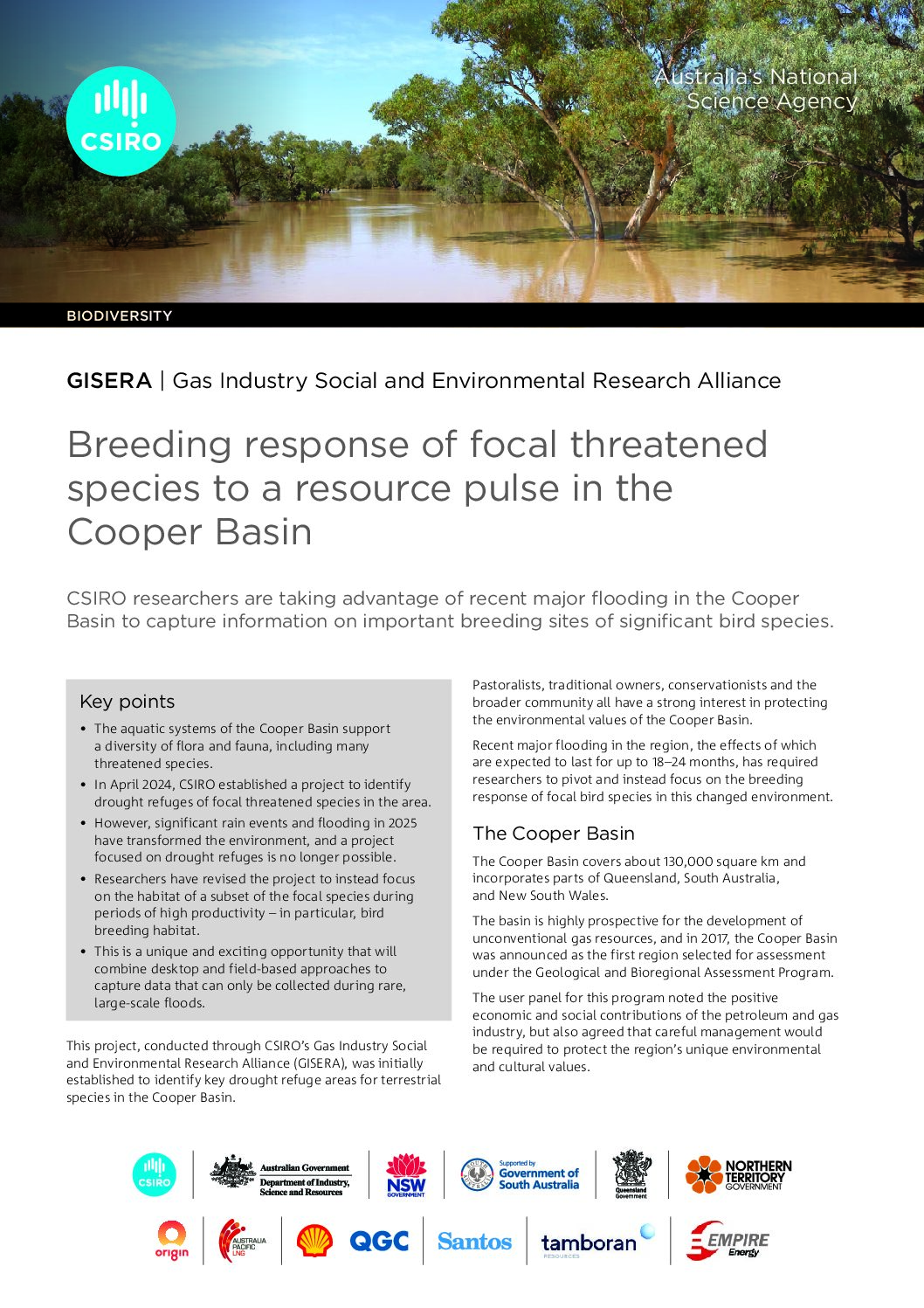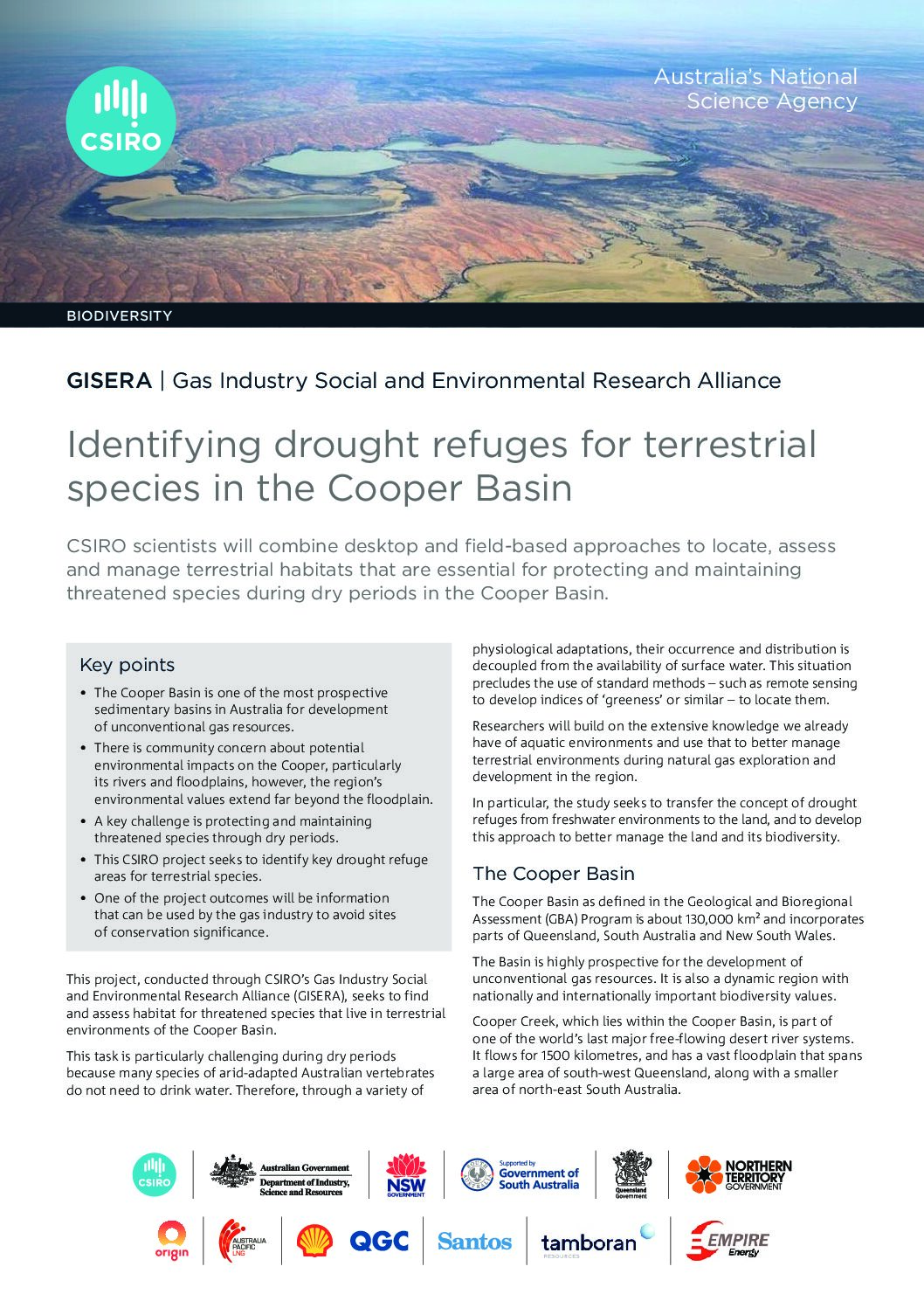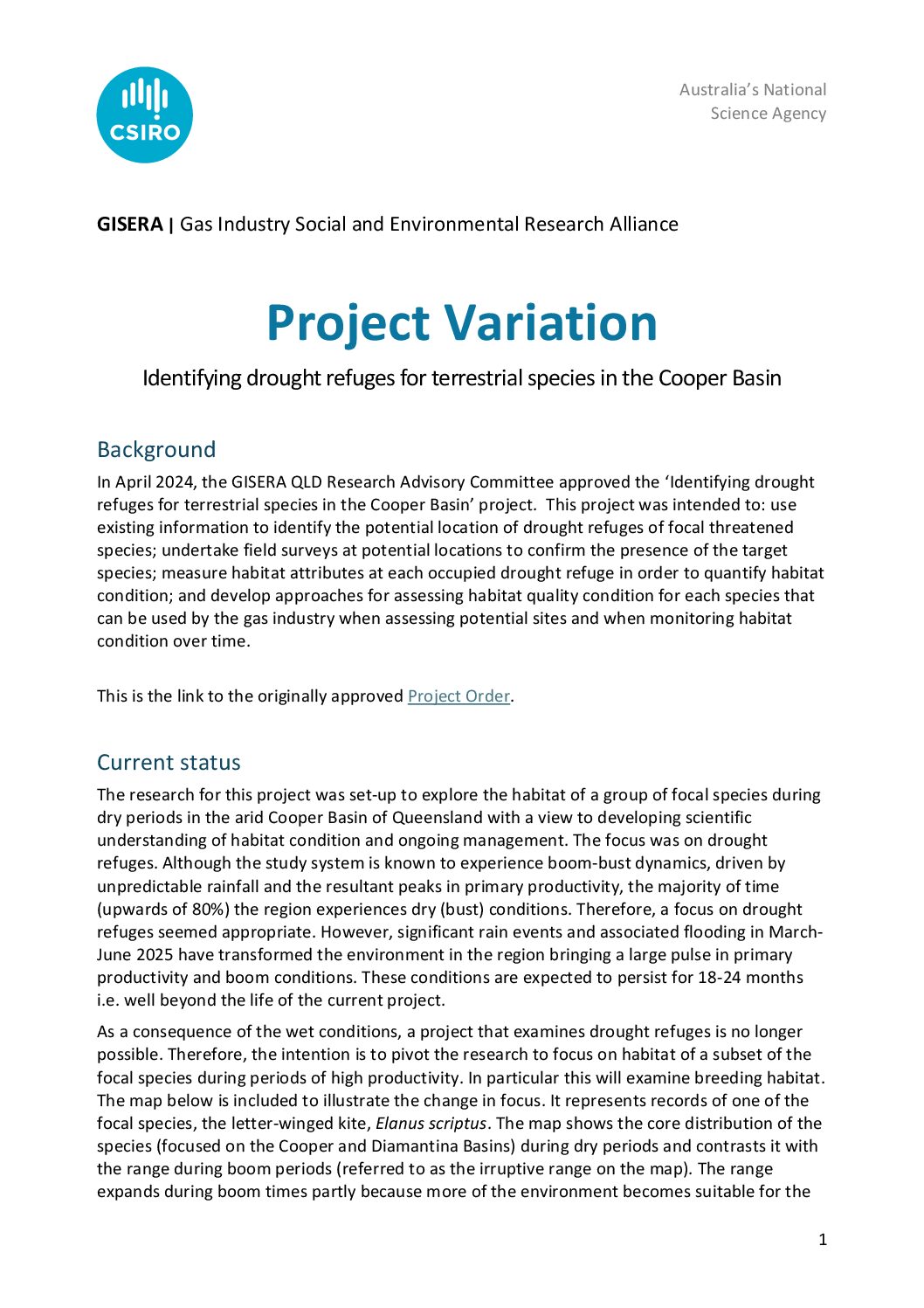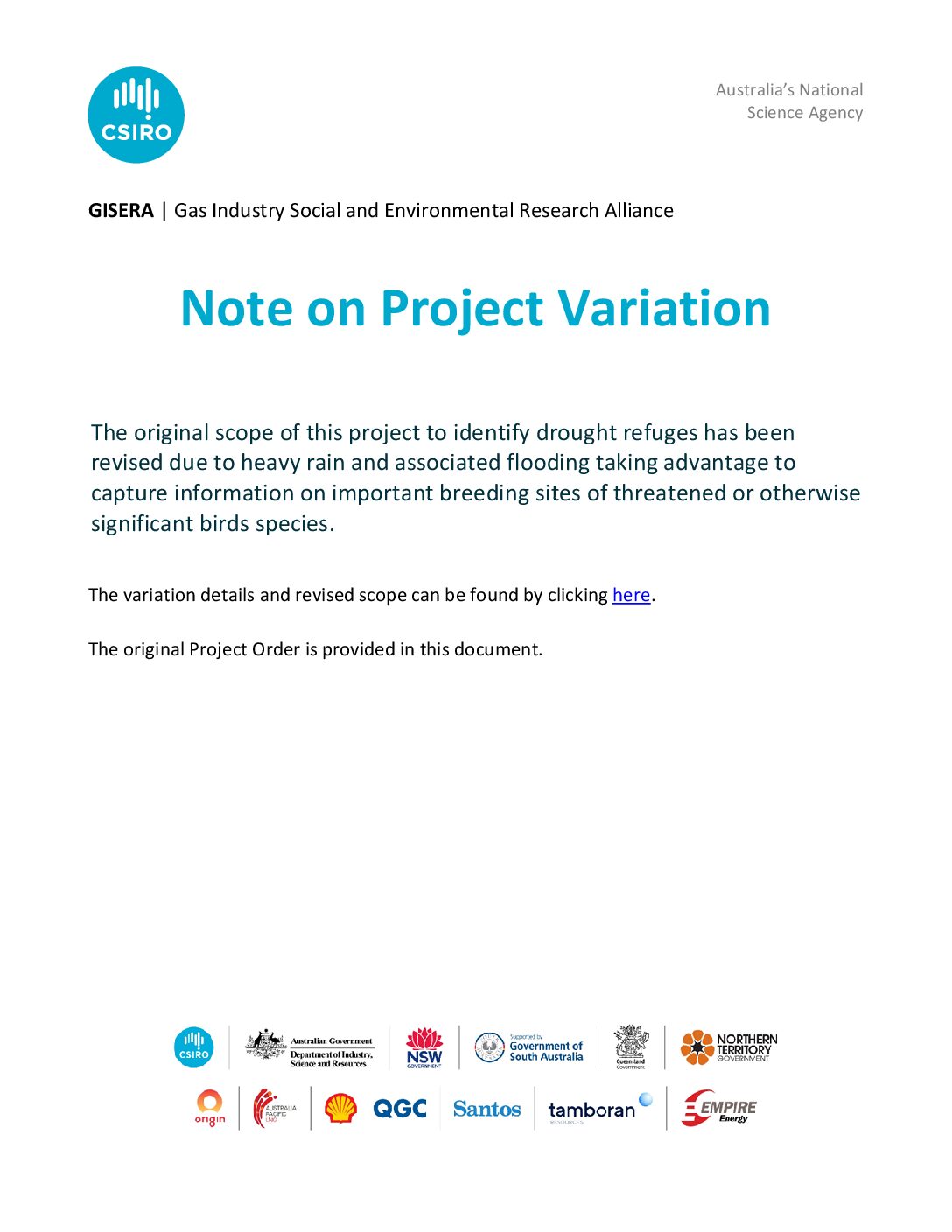Breeding response of focal threatened species to a resource pulse in the Cooper Basin
Pastoralists, traditional owners, conservationists and the broader community all have a strong interest in ensuring the ongoing resilience of the Cooper Basin, particularly its free‐flowing rivers such as Cooper Creek. This concern is focused on potential impacts to the environment from onshore gas development.
The region, particularly its rivers and floodplains, supports important environmental values including a rich biodiversity and populations of threatened species. From an environmental perspective, the Cooper Basin is of national importance, and it is exceptional on a global scale. The Cooper Creek floodplain is massive with an area of approximately 15,300 km2 and has the most variable hydrological regime of any of the world’s large rivers of comparable discharge.
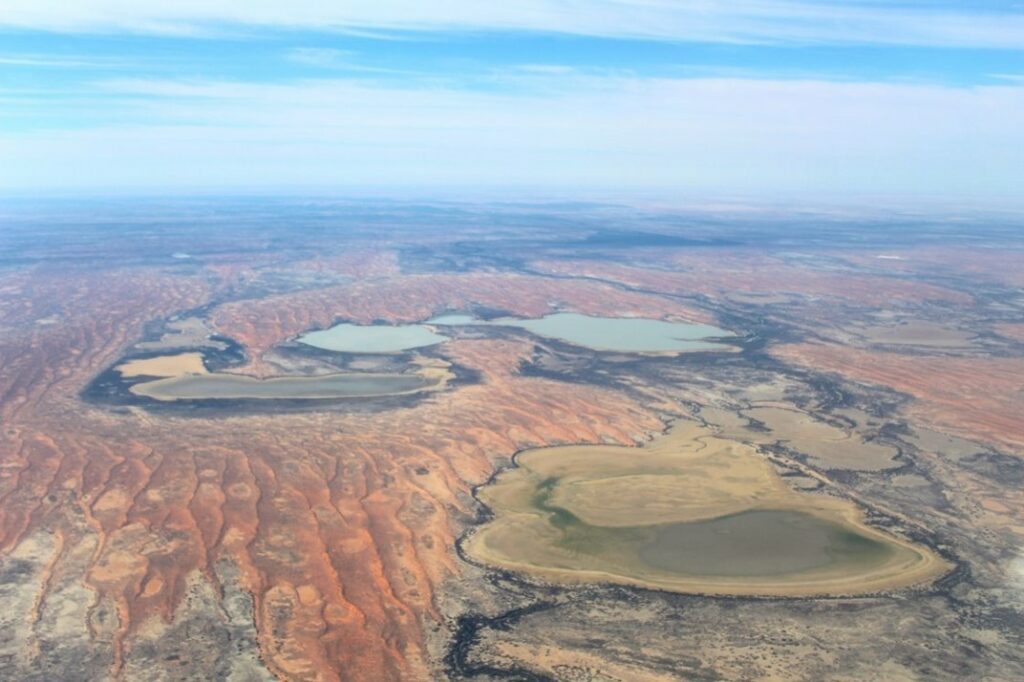
Major components of the biodiversity of the Cooper Basin occur in terrestrial environments.
The aquatic systems of the Cooper Basin are inhabited by a tremendous diversity of plants and animals, contain important cultural and spiritual values for Indigenous communities, and support a significant organic beef industry that depends on native pastures.
The environment features dramatic changes in condition, described as boom‐bust, that is driven by pulses in water availability and thus primary productivity. Dramatic variation in rainfall and river flows in the region produce alternating phases of boom and bust that are not predictable over time. The region is currently experiencing significant flooding which will trigger a major “boom” phase as flood waters gradually recede.
A key challenge in the Cooper Basin is to protect and maintain threatened species and their habitats for their continued survival and resilience through extended dry periods and floods. This challenge is heightened by ongoing exploration and operation by the resource sector. Although areas of the Cooper Basin will be set aside from gas development, community concerns about protection of the natural environment remain.
This CSIRO research project will take advantage of the current significant flooding in the Cooper Basin to capture information on important breeding sites for a subset of the focal species during boom conditions.

Trees emerging from floodwaters in the Simpson Desert
The Indiana Swamp in the western Simpson Desert shows how periodic floods inundate arid regions that can be dry for decades. Image Chris Pavey.
The project will combine desktop and field-based approaches to locate, assess the condition of, and manage habitat for a subset of focal species that are threatened or otherwise significant (endemic or near‐endemic) within the Cooper Basin.
This research will focus on habitat of the focal species during periods of high productivity. In particular this will examine breeding habitat of four birds: the grey grasswren, letter-winged kite, plains wanderer and yellow chat.
A second aim of the revised project is to seek to gain an understanding of the presence of threatening processes at breeding populations of the focal species during a period of high resource availability.

The letter-winged kite lands in a bare tree
This research will improve understanding of birds such as the letter-winged kite Elanus scriptus (above). The letter-winged kite is a small and rare bird of prey that hunts rodents at night. The letter-winged kite is an irruptive species, which means its population numbers in the Cooper Basin are expected to increase in line with increased availability of food sources triggered by flood-related boom conditions. Image Peter and Lisa Nunn.
Several threats are most prevalent during or soon after the conclusion of resource pulses. These threats include the number of feral house cats and introduced red foxes present, the stocking rate of cattle and the number of feral herbivores (including wild pigs, goats and horses) present. Invasive plants may also emerge as an issue.
Undertaking this work while breeding is occurring will provide an understanding of the magnitude of threats during highly productive periods.
A final aim of the revised project is to examine habitat during a resource pulse. This work will focus on grey grasswren because their main habitat – lignum swamp – is inundated during flood events. Therefore, it is likely to show a strong positive response during wet periods and the contrast in habitat condition between boom and bust periods is predicted to be greatest in the floodplain environment.
Note: In April 2024, the QLD RAC approved the “Identifying drought refuges for terrestrial species in the Cooper Basin’ project.” However, significant rain and associated flooding in March-June 2025 have transformed the environment in the region, bringing a large pulse in primary productivity and boom conditions. As a consequence of the wet conditions, a project that examines drought refuges is no longer possible. In July 2025 The QLD RAC approved a variation to the project to reflect a decision to pivot the research focus onto the habitat of a subset of the focal species during periods of high productivity. In particular this will examine bird breeding habitat. The intention of the revised project is to take advantage of this pulse in resource availability and capture information on important breeding sites for a subset of the focal species.

